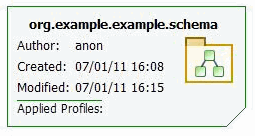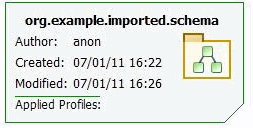Import Mappings - XSD to Business Object Model
An XML schema document (XSD) can be imported into TIBCO Business Studio to create a Business Object Model. This section describes the mappings between the original XSD constructs and the resulting Business Object Model constructs.
See Importing XML Schema Files.
In addition to creating UML elements in the Business Object Model, the original XSD information is also stored internally as stereotypes defined within a custom UML profile. This information is used if the Business Object Model originating from an XML schema import is re-exported as XSD so that the exported schema can be reconstructed to be logically equivalent to the original without loss of information (see Export Mappings). Note however, that this information exists only until the user makes a change to the model of the newly created Business Object Model. At this point the user will be presented with the following dialog:
Clicking OK will remove the profile containing the original XSD information. Subsequent export of this Business Object Model to XML Schema will follow the mappings for a "user-defined" Business Object Model outlined in Export Mappings.
Target Namespace
The schema ExampleSchema.xsd with the following namespace information:
<schema xmlns=http://www.w3.org/2001/XMLSchema targetNamespace="http://www.example.org/ExampleSchema" mlns:tns="http://www.example.org/ExampleSchema" elementFormDefault="qualified"> </schema>
Creates a Business Object Model called ExampleSchema.bom with the following:



